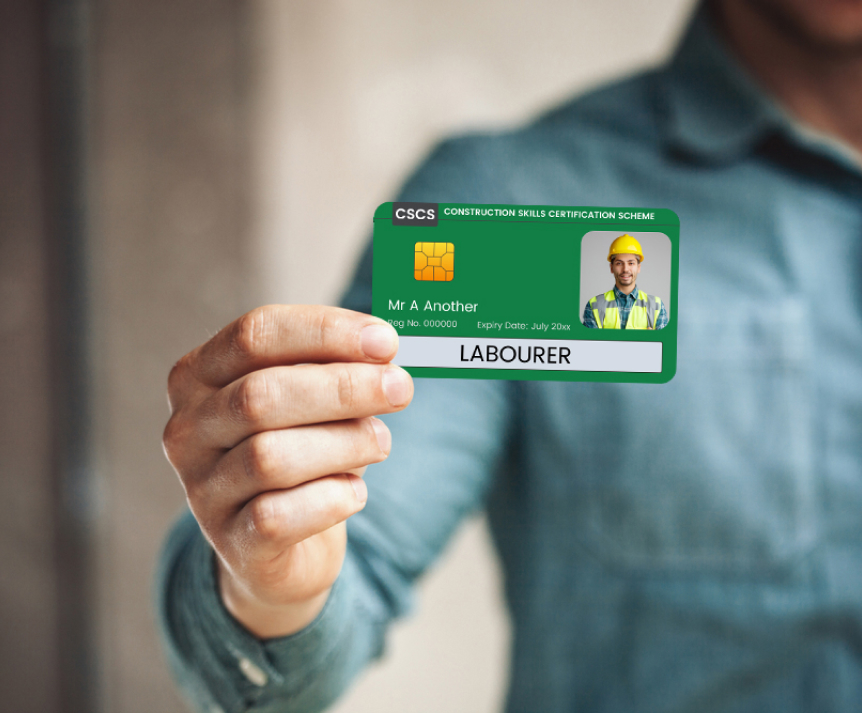In 2023, a total of 40 people died from work-related falls in the UK. This is up by eleven from last year, and an increase of five from the last five-year average. Of the 40 people who died, 24 worked in construction. Such a dramatic increase in work-related incidents should be a cause for concern for employers.
With such increasing work-related injuries and deaths, employers should proactively take measures to ensure the safety and security of employees working at heights.
Also, employees that work at heights should be aware of what safety measures and training are required to safely work in such dangerous work environments.
So, let’s look at what both employees and employers can do to ensure a safe and secure work environment.
Is Working At Heights A Dangerous Occupation?
Working at heights involves a risk of falling that is liable to cause injuries. Falls from heights are one of the biggest causes of workplace fatalities and injuries. Working at height can involve working on scaffoldings, step-ladders, washing high windows, installing roofs, guttering, and painting roofs. Employers should adhere to The Work At Heights 2005 regulations to ensure that their employees aren’t put in harm’s way.
What Are The Hazards of Working At Heights?
There are a number of hazards when working at heights. From the obvious risk such as falling to insufficient edge protection, it’s important to know these hazards if you’re planning to work at height.
1. Falling From Height
The most obvious risk while working at height is the risk of falling down. If the fall isn’t severe then it can result in only minor bruises. But if it is, then it can result in life-threatening injuries. Also, your fall can injure others who might be there or just passing by.
2. Dropping Equipment
Another hazard of working at heights is that you can drop equipment. This can seriously threaten the lives and safety of those working just beneath or around where you are working. Hence, it is important to keep your equipment secure at all times. And ensure that once you are done using them, they are kept in a safe place.
3. Unguarded Openings
When working at heights, it is essential that you cover any unguarded opening as anyone, or even you, can fall through them if they are not careful. They can be protected with a fall protection cover.
4. Fragile Surfaces
Fragile surfaces are one of the biggest hazards of working on heights. They can collapse anytime, thus, hurting you seriously. So, it is essential that, before working, a thorough risk assessment is done of the surfaces.
5. Poor Edge Protection
The first thing before you start working at heights such as roofs is that you protect the edges. Unprotected edges are an immense hazard. You can fall while talking to your colleague or if you’re not aware of the situation.
6. Insufficient Protective Equipment
Personal Protective Equipment (PPE) such as harnesses, ropes, and hard hats are vital to working at heights. If they are not present, then you might fall or can have a fatal accident. Therefore, it is essential that you check whether all necessary PPE is present before you start working.
Who Can Work At Heights?
Many jobs require workers to climb on often dangerous, structures to carry out their duties. Some of them are:
Roofers
Roofers are responsible for installing, repairing, and maintaining roofs. They work on heights as well as elevated structures with equipment such as nail guns, pry bars, roofing blades, scoop shovels, etc. Roofing is often the deadliest occupation in the construction sector. In 2020, 108 roofers died as a result of workplace injuries.
With such a chance of fatalities, roofing is also the most regulated and supervised construction job requiring hours of theory and practical training.
Window Cleaners
Window cleaners clean windows of high-rises and skyscrapers using elevated platforms. These jobs are also extremely risky as the carriage taking the cleaners can fall. As a result, the cleaners can experience severe injuries, or worse, they can die.
Construction Workers
Construction workers have to work on scaffoldings to construct high-rise buildings and skyscrapers. Without proper training in safety and equipment handling, these workers are at risk of falls that can result in life-threatening injuries.
Painters
Painters also work at heights. They are required to paint the exteriors and interiors of high-rise buildings, which is an extremely dangerous undertaking as it requires the use of ladders and step ladders to reach these areas.
How Many Minimum People Are Required To Work At Heights?
According to the law, there is no legal requirement for a minimum number of persons to be working at heights. It can either be a single worker or a team of many individuals. However, it is advised that the work should be supervised by a competent individual. Indeed, a single person will not be able to call for help if they had a serious fall.
Although, on the other hand, in the case of a fall, a supervisor can raise the alarm and attract the attention of others who can then call for medical assistance for the fallen worker.
Will The Work At Height Regulation 2005 Be Scrapped in The UK?
After Brexit, The Retained EU Law (Revocation & Reforms) Bill 2022 is expected to come into effect, thus, spelling the end of over 2,400 EU regulations. If this happens then several EU regulations will not apply to UK employers.
This means that the Working At Height Regulation 2005 will cease to be in effect. Although it is still unconfirmed, if the bill goes through, this regulation will become null and void after December 2023.
These plans have raised valid concerns among many unions. Some unions have launched a campaign to save this regulation so that workers are kept safe and employers continue to prevent falls and fatalities that occur while working at height.
Responsibilities Of Employers In Ensuring Employee Safety
Employers should be the first to recognise the risk and dangers associated with working at heights on a construction site. They should involve themselves in mitigating the risks and providing a safe and secure environment for workers to do their jobs.
Here’s how you as an employer can take responsibility for the safety of their workers who are working at heights:
- Risk Assessment
The first step in ensuring the safety of workers is to assess all the risks at a construction site. These risks can be from the weather, the equipment, and the topography of the site. When you have identified all the risks, start planning on how you can make your workforce safe from any unforeseen accidents. Place competent people in charge of carrying out the work, and take daily reports on the safety and security of those involved.
Site Safety
Secondly, you should secure the site before starting work. For example, if your roofers are working in areas that encounter high winds, then ensure there are adequate safety measures in place, like safety nets, harnesses, railings etc. to save them from any accidents.
Also, site supervisors have to ensure that workers should not be working near fragile surfaces or falling objects. If they have to work near such dangers, at least display signs to warn them and other passersby.
Provide Sufficient Training
Jobs like roofing, painting, and window cleaning require skills to complete. Therefore, you as an employer should train your workforce to the extent that they can safely and efficiently complete their tasks.
For example, workers should keep both their feet and one hand on the ladder while working at heights. This should be taught to especially the novices who are just starting to work on a construction site.
Use High-Quality Equipment
As an employer, you have to make sure that the quality of the equipment that your workers use is top-notch. For example, access equipment such as ladders, step-ladders, and scaffoldings should be in working order and not damaged in any way as it can put your workers at risk of falling and sustaining life-threatening injuries.
Ladders and step ladders should only be used if the work is of a short duration i.e. 15 to 30 minutes or when access to the area is not possible without them.
Moreover, after using the equipment, it should be the responsibility of the site supervisor to inspect them and establish whether they are in working condition or not.
Ensure Supervision
Finally, constant vigilance should be the motto you should follow as an employer in the construction industry. You have to supervise the work at all times to ensure that everything goes according to the plan and your workers are kept safe at all times.
As you cannot be everywhere at all times, you can delegate supervision tasks to people with supervisory experience. An individual with a CSCS Gold Supervisory Card can be perfect for this role, as he will be experienced in identifying dangers and risks associated with working at heights. So, he will take measures to mitigate all the risks associated with a job.
Do I Need A CSCS Card To Work At Heights?
Although a CSCS card isn’t a mandatory requirement for working at heights, still some employers will require you to have one. A CSCS Card can help you in impressing your employers. It assures them that you are a highly skilled individual with the required knowledge of industry safety and health measures.
This will not only allow an employer to build a skilled and qualified workforce, but it will also aid him in implementing construction site safety plans. For example, if you are a CSCS Green Labourer Card holder then your employer might partner you with a skilled Blue CSCS Card worker.
Moreover, supervisors and CSCS Black Card managers will be present there to supervise the work, thus, adding another layer of protection and allowing you to work without any worries.
Frequently Asked Questions (FAQs)
What is scaffolding in safety?
Scaffolding is a temporary structure that is erected to provide a safe working platform for workers to carry out their tasks while they are working at heights. Scaffoldings are most commonly used in construction for installing, repairing, and maintenance activities.
What is the minimum height for working in the UK?
If a person can fall two meters or more from a construction platform then, as per HSE, that height is the minimum height for working at heights.
What is the most common work injury in the UK?
The most common type of injuries in the UK are slips, trips and falls. They account for 33% of all non-fatal injuries in the country.
Final Verdict!
Working at heights is among the most dangerous occupations in the construction industry. With an increase in construction-related injuries, it’s pertinent for employers to ensure safe working environments for their employees.
They must take the responsibility of assessing all the risks associated with a project as discussed in this blog. Moreover, they have to provide sufficient training to their employees for them to work safely and effectively. Also, they have to ensure the usage of only high-quality equipment and guarantee round-the-clock supervision for the safety of the workers.
For this, they can hire workers with CSCS Cards. This will ensure that the personnel working are qualified to work at heights and will adhere to all the health, safety, and environmental protocols.




